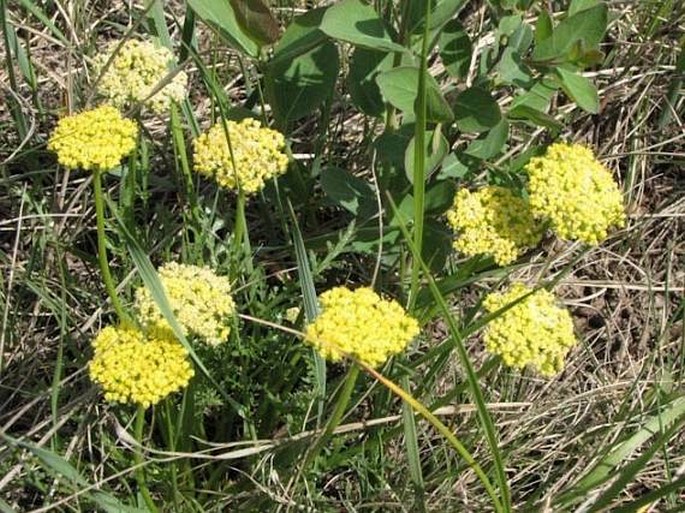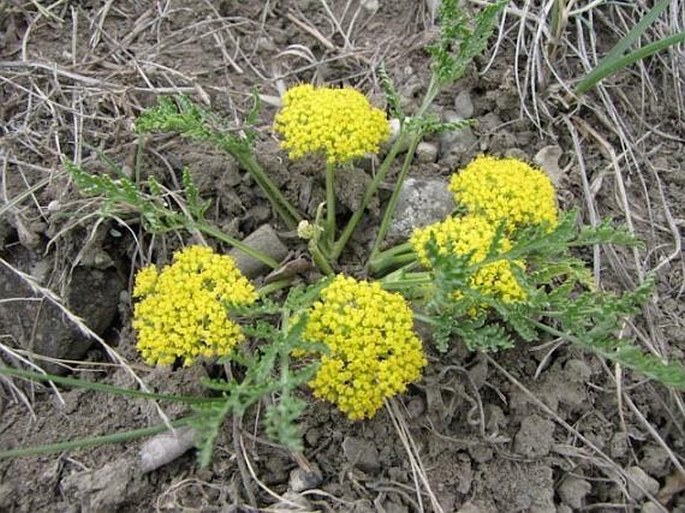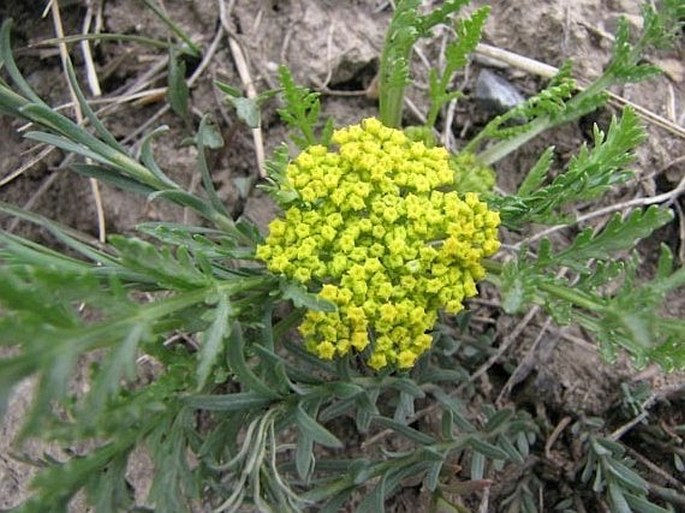Syn.: Adorium divaricatum Rydb., Musineum divaricatum (Pursh) Nutt. ex Torr. ex A. Gray, orth. var., Seseli divaricatum Pursh
Family: Apiaceae Lindl.

Distribution: North America. Found in foothills of Rocky Mountains towards the prairie, from Alberta to Colorado, from eastern Nevada to west of Dakotas.
Ecology: Grows in prairie, open meadows and slopes. Blooms from April to June.

Description: Perennial herb, only 10–30 cm tall, with thick taproot; stem short, dichotomously branched, hairless, coarse. Leaves with long petioles, swollen bases, compound, divided 1–3 times into narrow, toothed leaflets, bright green. Inflorescence terminal umbel, 5–7 cm across, compound with 5–15 rays, bracts of smaller umbels narrow; flowers yellow, 1–3 mm across, pentamerous. Fruit oval to oblong schizocarp, 3–5 mm long, ribbed, breaking into 2 single seeded segments.
Possible confusion: Cogswellia foeniculacea is a similar plant, sympatric with this species but with hairy stems, larger secondary umbels and winged schizocarps.
Use: Native tribes ate the raw roots of both Musineon and Cogswellia.


These images were taken in Canada, Alberta, Calgary, Twelve Mile Coulee Natural Environment Park (May 2012).


